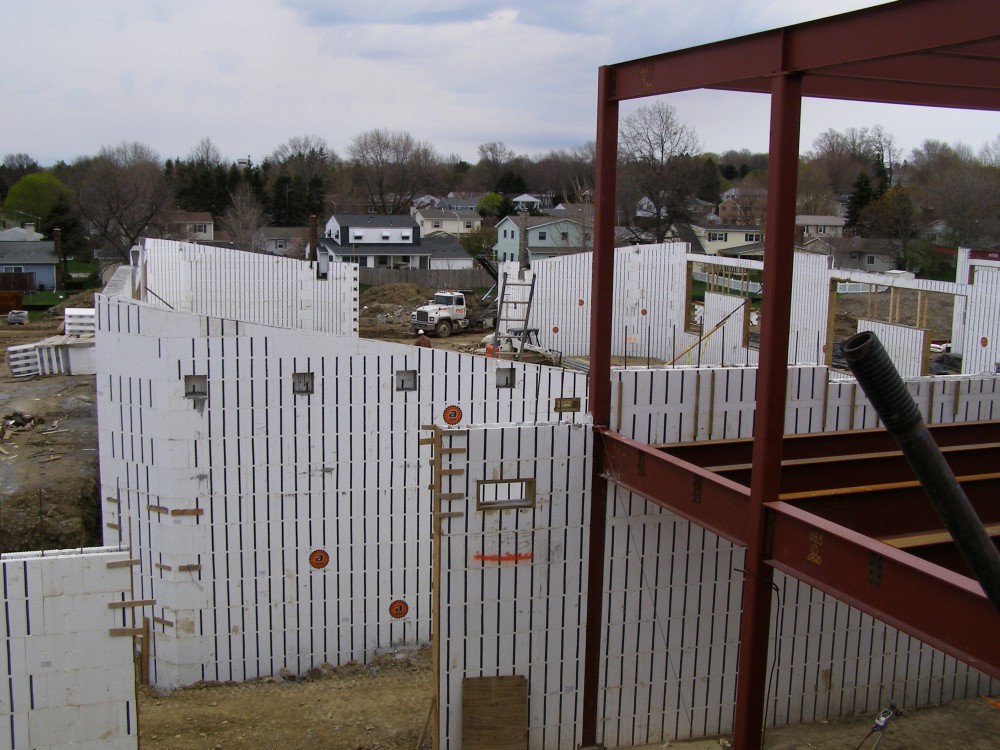Posted on July 09, 2020
Governments, utilities, lenders and insurers all incentivize energy-efficient construction. Choose ICF construction to take advantage of these programs.
Where will you find information about current incentives and programs? One comprehensive source is DSIRE, a program of North Carolina State’s Clean Energy Technology Center. It maintains the nation’s most complete listing of current energy-efficiency incentives.

Opportunities to Save
There are a number of incentives available to builders, developers, homeowners and commercial property owners.
Federal tax credits and deductions
Through December 31, 2020, a builder of an energy-efficient home can qualify for a $2,000 tax credit. The home must reduce heating and cooling costs by at least 50 percent when compared to the 2006 International Energy Conservation code (IECC) and subsequent supplements. According to Energy Star, “At least 1/5 of the energy savings has to come from building envelope improvements.”
Many ICF homes also feature solar, wind or geothermal renewable energy systems. The Bipartisan Budget Act of 2018 extends renewable energy tax credits for through December 31, 2021. However, credits decrease on a graduated scale. For systems placed in service by December 31, 2019, the tax credit was 30 percent. It is 26 percent for systems placed in service by December 31, 2020. Finally, for systems placed in service by December 31, 2021, the credit is 22 percent. Principal residences and second homes qualify for these renewable energy tax credits. Both existing and new homes qualify.
Thanks to the Energy Bill, commercial construction can qualify for tax deductions. Structures must reduce energy consumption 50 percent vs. a reference structure. Eligible owners or tenants qualify for a one-time, $1.80 sq/ft tax deduction. There is an important exception. In the case of a government-owned building, the designer qualifies for the tax deduction. Keep in mind that ICF buildings are very energy-efficient. Some projects meet the standard even before the impact of renewable energy sources is calculated.
Of particular interest to ICF builders is a partial reduction of up to $0.60 sqft. This incentive is available when the building envelope contributes 50 percent energy savings.
Utility incentives
Pennsylvania's Act 129 requires electric distribution companies (EDCs) to create programs promoting energy-efficiency. Consequently, Pennsylvania’s electric utilities offer residential and commercial incentives. Some utilities face multi-billion dollar infrastructure investments in the future. To delay the need for these expensive projects, they are highly motivated to promote energy savings among their customers.
PECO
PECO serves 1.6 million electricity customers in southeastern PA. PECO's graduated incentive program is for “whole building systems” with energy savings over code. It ranges from $0.155 sqft up to 0.70 sqft. Incentives begin at 11 percent over code. The highest incentive is for projects with energy savings of at least 60 percent over code.
PPL
PPL Electric Utilities serves 1.4 million electricity customers in 29 counties in the eastern part of the state. It offers a wide assortment of energy-related rebates and incentives. The PPL New Homes Program incentivizes energy-efficient construction. Builders can qualify for up to $2,500 per home.
Builders exceeding code requirements by 15 percent or more qualify for rebates of up to $0.30 per kWh based on annual usage. Energy Star homes qualify for up to $0.35 per kWh. HERS-rated single and multi-family projects are eligible. Incentives are calculated on a per-unit basis. Multi-family projects may qualify for thousands of dollars in rebates. Check out a map of PPL’s service territory here.
Energy-efficient Mortgages (EEM)
EEMs take into account the fact that it costs less to operate an energy-efficient home. Participating lenders understand that reduced energy costs essentially increase a borrower’s income. As a result, an EEM mortgage may feature better terms or increased loan amounts.
The Energy Star website notes that “An Energy Efficient Mortgage (EEM) is a mortgage that credits a home's energy efficiency in the mortgage itself.” EEMs apply to new construction. Energy Improvement Mortgages (EIMs) apply to existing homes upgraded for better energy efficiency.
To qualify for an EEM or EIM, a home energy rater calculates a home energy rating. The lender then knows the estimated monthly energy savings of the structure. Choose from various programs like FHA EEMs, VA EEMs and conventional EEMs.
These special mortgages cover the added costs of energy-efficient construction, often without increasing a homeowner’s overall monthly payments. The mortgage payment is higher, but it is offset by lower utility bills and insurance premiums. Ultimately, the homeowner ends up with a more valuable home. Also, an energy-efficient home is often more appealing to prospective buyers.
Fannie Mae green financing focuses on upgraded multi-family developments (5+ units). It is possible to qualify for preferential pricing with an eligible green building certification. To qualify, interested multi-family property owners should coordinate with a Fannie Mae DUS lender. To qualify,it is necessary to document 30-percent savings in energy and water consumption, with at least 15 percent savings in energy consumption.
Lower insurance premiums
ICF construction is ideally positioned to take advantage of insurance discounts. Builders and owners often qualify for loss mitigation programs promoting resilient construction.
FORTIFIED is a program of the Insurance Institute for Business & Home Safety (IBHS). It is a non-profit organization supported by both property insurers and reinsurers. Their FORTIFIED Gold standard is for buildings capable of withstanding CAT 3 storms or equivalent. Meeting the standard can result in lower insurance premiums.There are both FORTIFIED Residential and FORTIFIED Commercial programs.
Learn More
The Pennsylvania Aggregates and Concrete Association (PACA) promotes the use of concrete in commercial, residential and government projects. If you have further questions about incentives for energy-efficient ICF and other concrete construction, please contact us.
